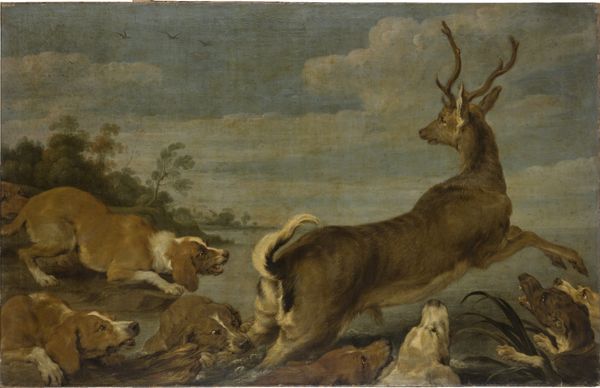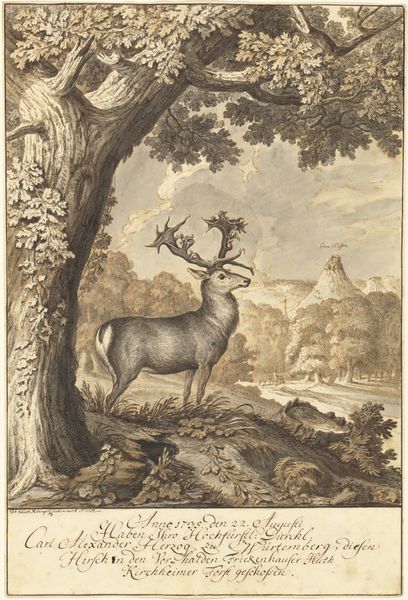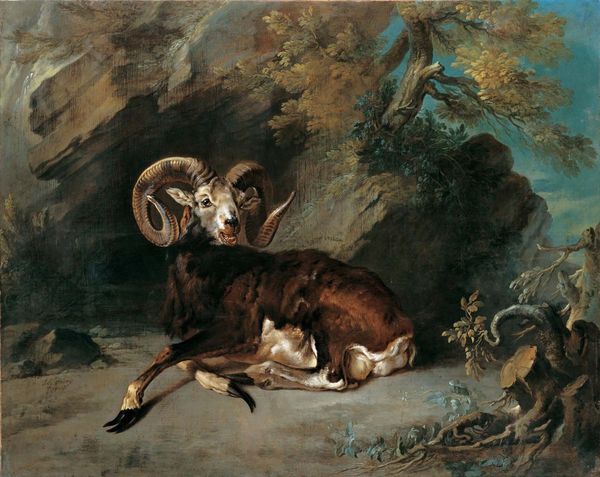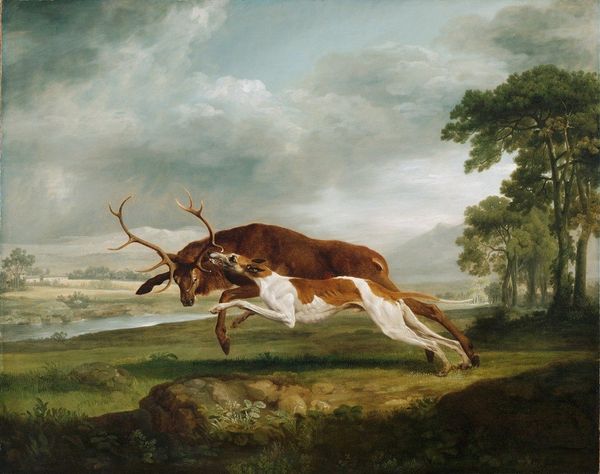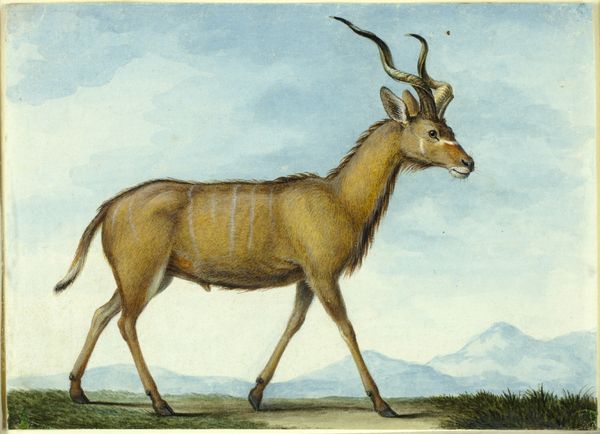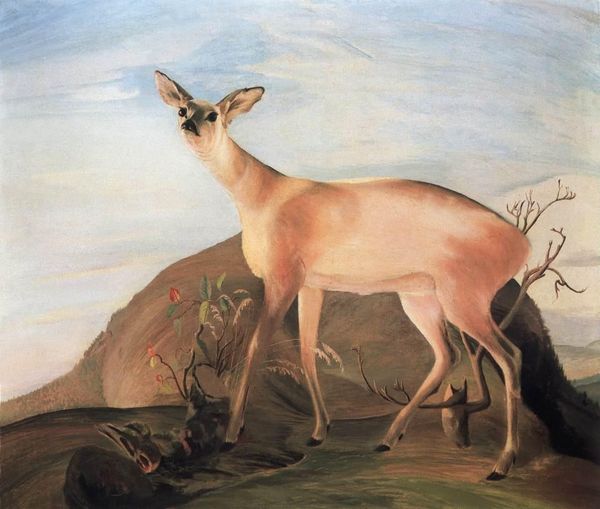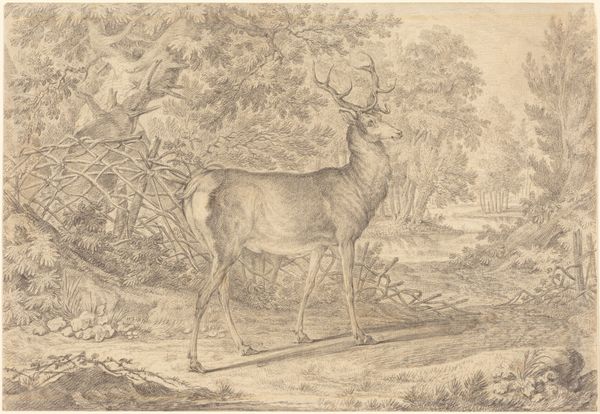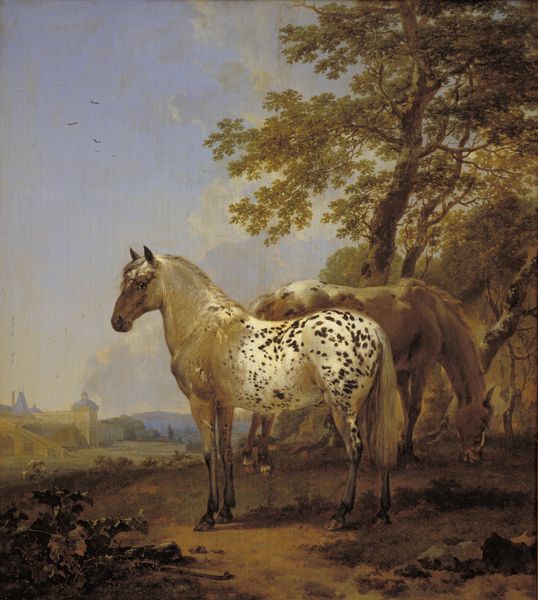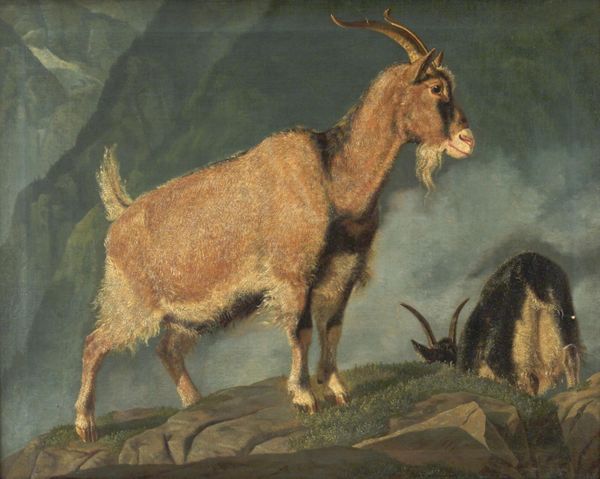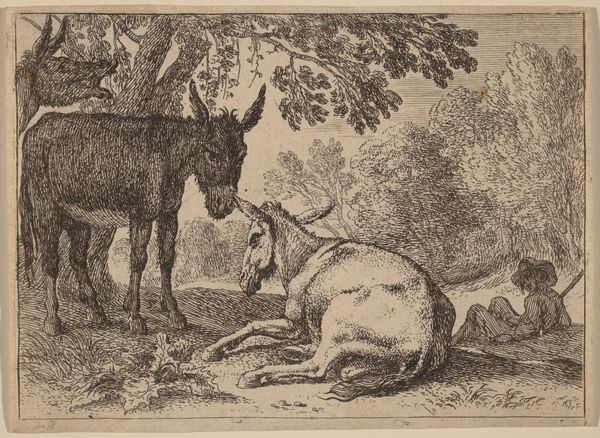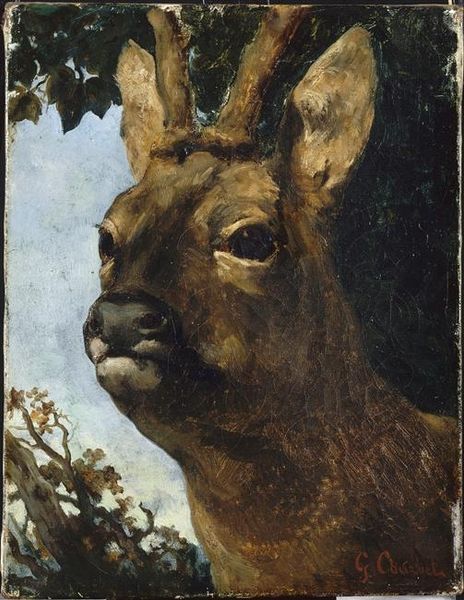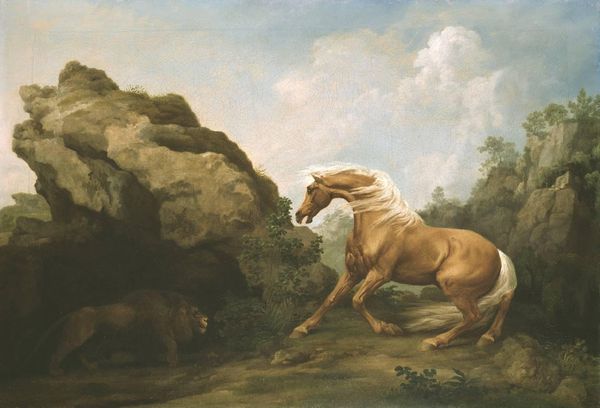
painting, oil-paint
#
portrait
#
baroque
#
animal
#
painting
#
oil-paint
#
landscape
#
oil painting
#
animal portrait
#
history-painting
#
realism
Dimensions: 130 x 162 cm
Copyright: Public domain
Curator: Here we have Jean-Baptiste Oudry's "Indian Blackbuck," created around 1739. What's your immediate impression? Editor: It's strikingly elegant, almost posed. The stark contrast of the buck's dark fur against the softer landscape creates a really strong focal point. And those antlers! Curator: Absolutely. Oudry, celebrated for his animal paintings, likely worked from descriptions or earlier depictions rather than direct observation, which is crucial. Blackbuck, native to the Indian subcontinent, were exotic novelties in Europe at the time, and acquiring these rare species underscored power. Oudry was employed creating art for Louis XV to document royal acquisitions. Editor: That explains the somewhat... theatrical air. It feels less like a candid glimpse of nature and more like a carefully constructed portrait. The details, the way light catches the fur, it elevates the animal. Are those oil paints? Curator: Yes, it is oil on canvas. Think about the resources and labor involved. Oudry likely used a complex layering technique, with assistants grinding pigments, preparing canvases, and so on. This contrasts sharply with indigenous representations of animals from the same era. It certainly highlights class differences and material accumulation in court society at that time, right? Editor: True, yet it’s also successful on a purely visual level. The composition, with the blackbuck slightly off-center, creates a dynamic tension. The hazy blues in the background further amplify the buck’s form. It creates such depth. Curator: And how that detail enhances the animal's prestige, solidifying the court's influence! Every component, from the canvas preparation to the brushstrokes, showcases social values as much as Oudry's talent. Even in the composition: The landscape feels more like a stage set, positioning the buck not as a wild creature, but as an exotic possession displayed within a controlled environment. Editor: Perhaps. I see it, more than that, as elevating a singular, striking being into the realm of art. Ultimately, that formal design captures the eye regardless of all that political messaging! Curator: It's undeniable how the stylistic conventions, like dramatic light and theatrical framing, helped establish and reproduce very real and enduring social relationships of inequality through these luxury objects! It is compelling to ponder these contradictions within the historical context. Editor: A fitting reflection, underscoring how one's interpretation shapes how and why a painting moves us.
Comments
No comments
Be the first to comment and join the conversation on the ultimate creative platform.
